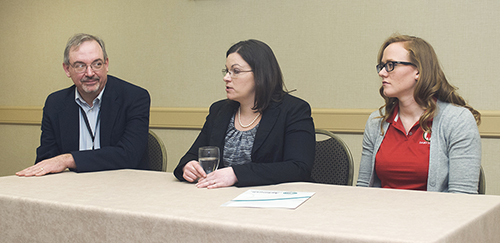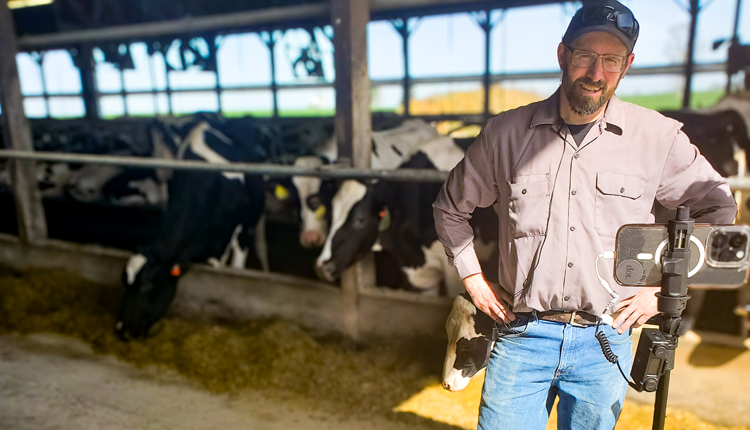
Next to mastitis, perhaps no subclinical health problem is as common, as unseen (if not outright ignored) or as costly to dairy producers as ketosis.
But a new, inexpensive monitoring tool called KetoMonitor developed in less than a year by University of Wisconsin-Madison researchers Gary Oetzel, Heather White and Tawny Chandler (seen above), in cooperation with AgSource Cooperative Resources, was introduced on Wednesday this week that can put thousands of those dollars back into producers' pockets.
Researchers long ago peeled back the scary reality about ketosis, which is more common in mature cows than heifers and is caused when their postcalving energy needs are simply unable to be met through feed intake:
- Forty to 60 percent of all animals experience ketosis.
- Those that do have a much greater risk of displaced abomasums.
- They also peak lower and produce less milk throughout the lactation.
- Ketosis animals are 350 percent more likely to be culled during that lactation than nonaffected animals.
- Each ketosis case costs an estimated $289 in treatment, lost production and increased culling.
Based upon research trial data collected on 12 control herds and subsequent model validation, the test's accuracy was 91 percent.
The test does not identify individual cows, and the once-a-month nature of DHIA testing means it is only a prevalence indicator for ketosis in a herd on that day. But what it does do is tell producers if they have a problem.
More than 15 percent incidence means there is a problem, and working with the herd veterinarian and nutritionist is needed, and perhaps requires individual blood tests. At or above the 15 percent incidence level, research shows the cost of blood testing every fresh cow twice is justified.
Availability of KetoMonitor costs 10 cents per head and is available through AgSource. The test is currently limited to dairies in the Midwest, as only a few labs have the very expensive testing equipment needed. But that is expected to change as producer demand grows and more labs replace or upgrade their equipment.

The author has served large Western dairy readers for the past 37 years and manages Hoard's WEST, a publication written specifically for Western herds. He is a graduate of Cal Poly-San Luis Obispo, majored in journalism and is known as a Western dairying specialist.










